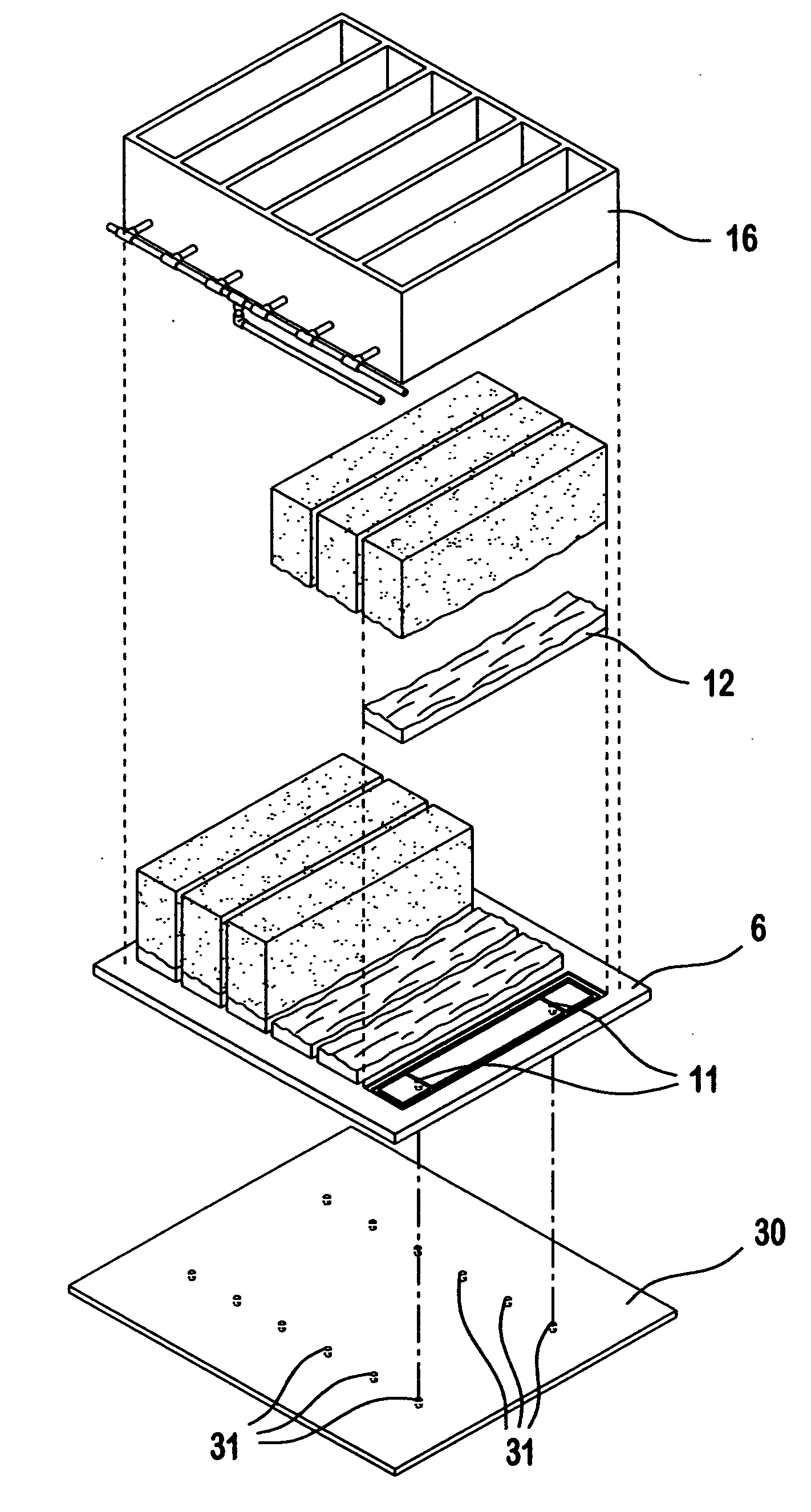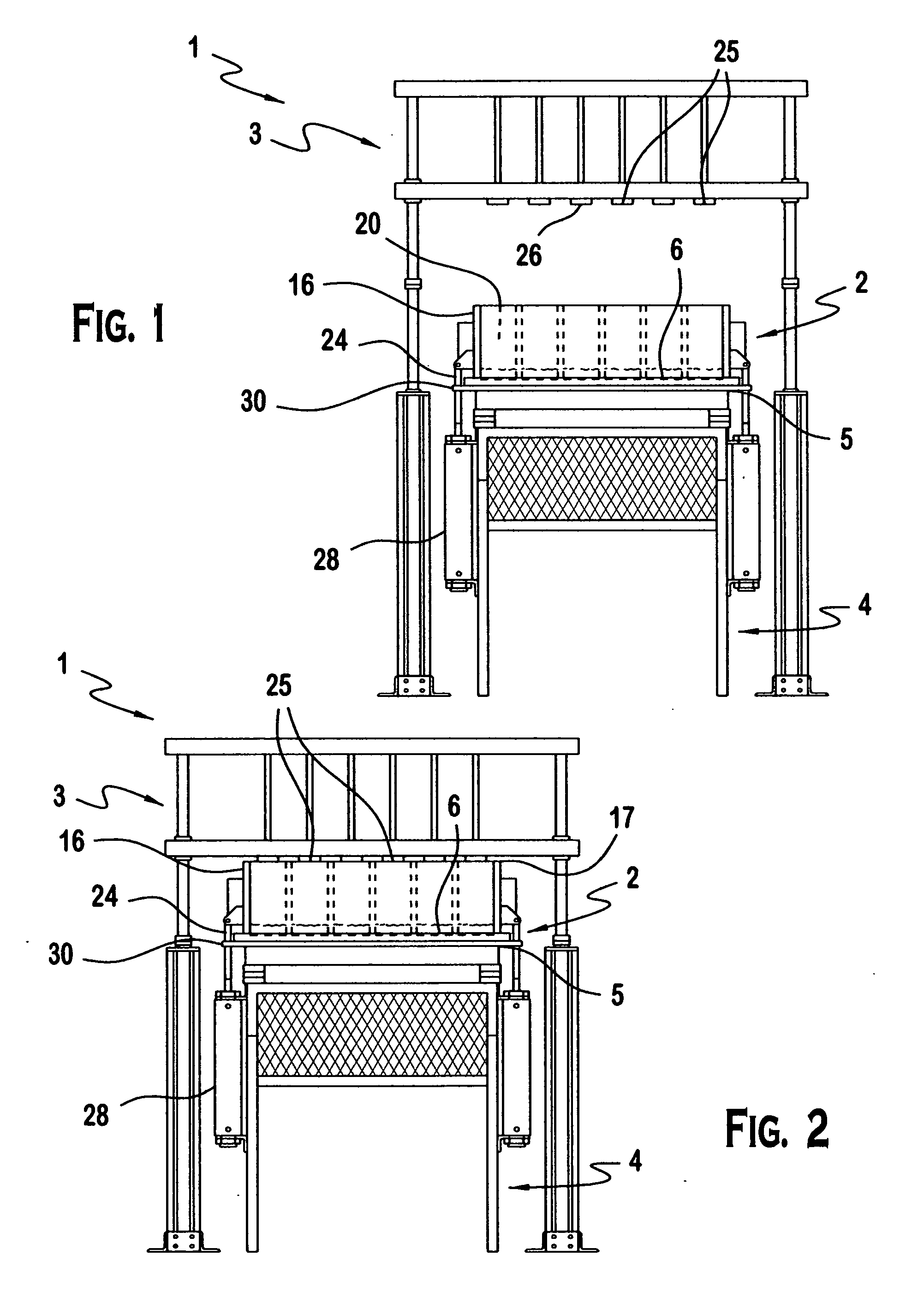Concrete block making machine and method
a concrete block and machine technology, applied in the direction of dough shaping, manufacturing tools, applications, etc., can solve the problems of irregular, shiny, non-split surface of the workpiece, and workpiece splits (cracks)
- Summary
- Abstract
- Description
- Claims
- Application Information
AI Technical Summary
Problems solved by technology
Method used
Image
Examples
Embodiment Construction
[0023]While this invention is susceptible of embodiments in many different forms, the drawings shown and the specification describe in detail several embodiments of the invention. It should be understood that the drawings and the specification are to be considered an exemplification of the principles of the invention. They are not intended to limit the broad aspects of the inventive method and related equipment to the embodiments illustrated.
[0024]The present invention provides a method for making decorative concrete blocks, and related equipment for performing the method. Applicants' invention provides a method and related equipment that do not suffer from at least one of the disadvantages of conventional decorative concrete block making methods and equipment. Applicants' method has at least one of the following attributes: creates a more natural rock face appearance to the faces of decorative concrete wall blocks, by among other things, eliminating the regular, sharp face edges th...
PUM
| Property | Measurement | Unit |
|---|---|---|
| pressure | aaaaa | aaaaa |
| diameter | aaaaa | aaaaa |
| pressure | aaaaa | aaaaa |
Abstract
Description
Claims
Application Information
 Login to View More
Login to View More - R&D
- Intellectual Property
- Life Sciences
- Materials
- Tech Scout
- Unparalleled Data Quality
- Higher Quality Content
- 60% Fewer Hallucinations
Browse by: Latest US Patents, China's latest patents, Technical Efficacy Thesaurus, Application Domain, Technology Topic, Popular Technical Reports.
© 2025 PatSnap. All rights reserved.Legal|Privacy policy|Modern Slavery Act Transparency Statement|Sitemap|About US| Contact US: help@patsnap.com



